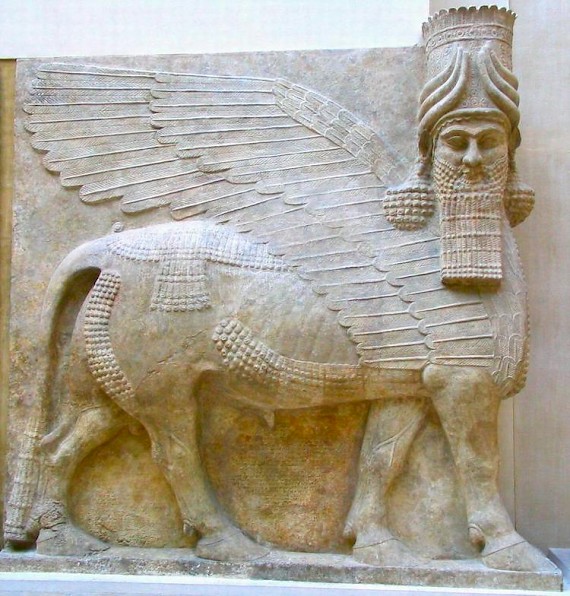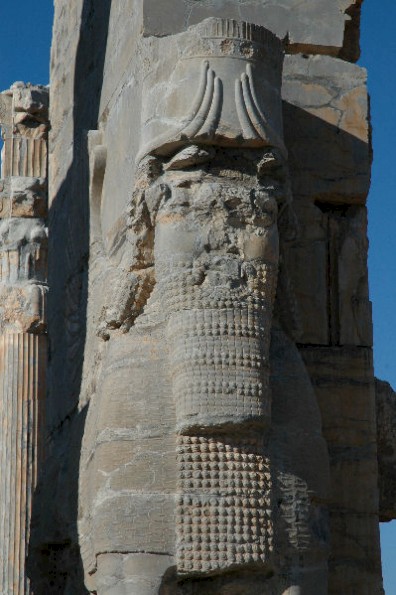Lamassu (bull-man)
Lamassu: Babylonian protective demon with a bull's body, eagle's wings, and a human head.

The name lamassu is not without problems. The Sumerian word lama, which is rendered in Akkadian as lamassu, refers to a protective deity, who is usually female. She is often represented as a standing figure that introduces guests to another, superior god. So she is actually a servant. Her male counterpart is called alad or, in Akkadian, šêdu.
During the Neo-Assyrian Empire (c.883-612), large monumental bulls, often with wings and always with human heads, were placed as gateway guardians at the entrances of royal palaces like Khorsabad and Nineveh. The general idea behind them was that they warded off evil. (In jargon: they were apotropaic figures.) Usually, they have five legs. Lion-bodied protective deities are also known, and are usually called "sphinxes".

These monumental statues were called aladlammû ("protective spirit") or lamassu, which means that the original female word was now applied for a rather macho demon. In one modern interpretation, they combine the strength of a bull, the freedom of an eagle, and the intelligence of a human being. Female lamassu's are called apsasû.
Lammasu's are also known from the palaces of the Achaemenid kings. Those in Pasargadae have now disappeared, but in Persepolis, we can still see them in the Gate of all nations. The hoofs are visible in the Unfinished gate; in the building that is identified as either a Council Hall or a Tripylon ("triple gate"), lamassu's served as the capitals of columns.
Similar mythological creatures were called "gopathas" in Persian. It would be interesting if we could establish a link between the Asian bull-man lamassu and the Greek bull-man Minotaur, although the first one has a man's head and a bull's body, and the Minotaur has a man's body and a bull's head.